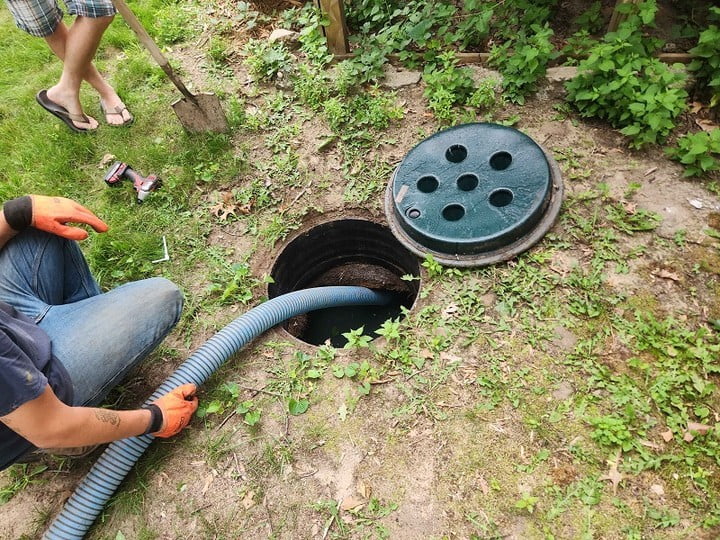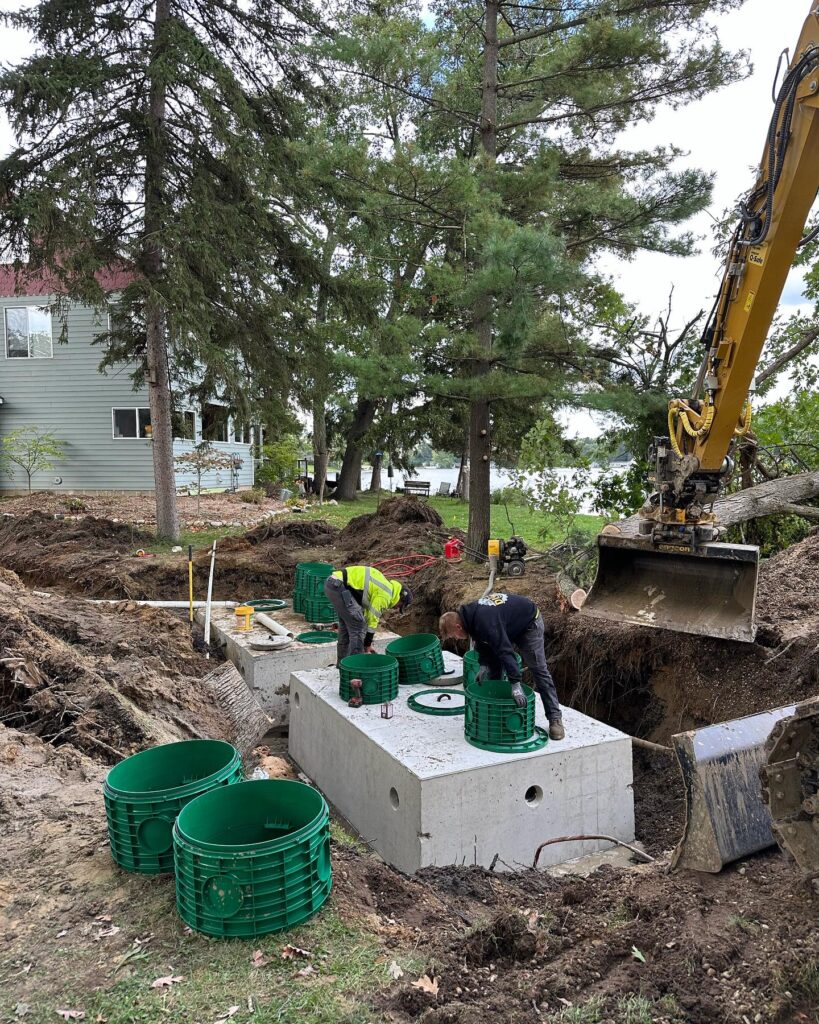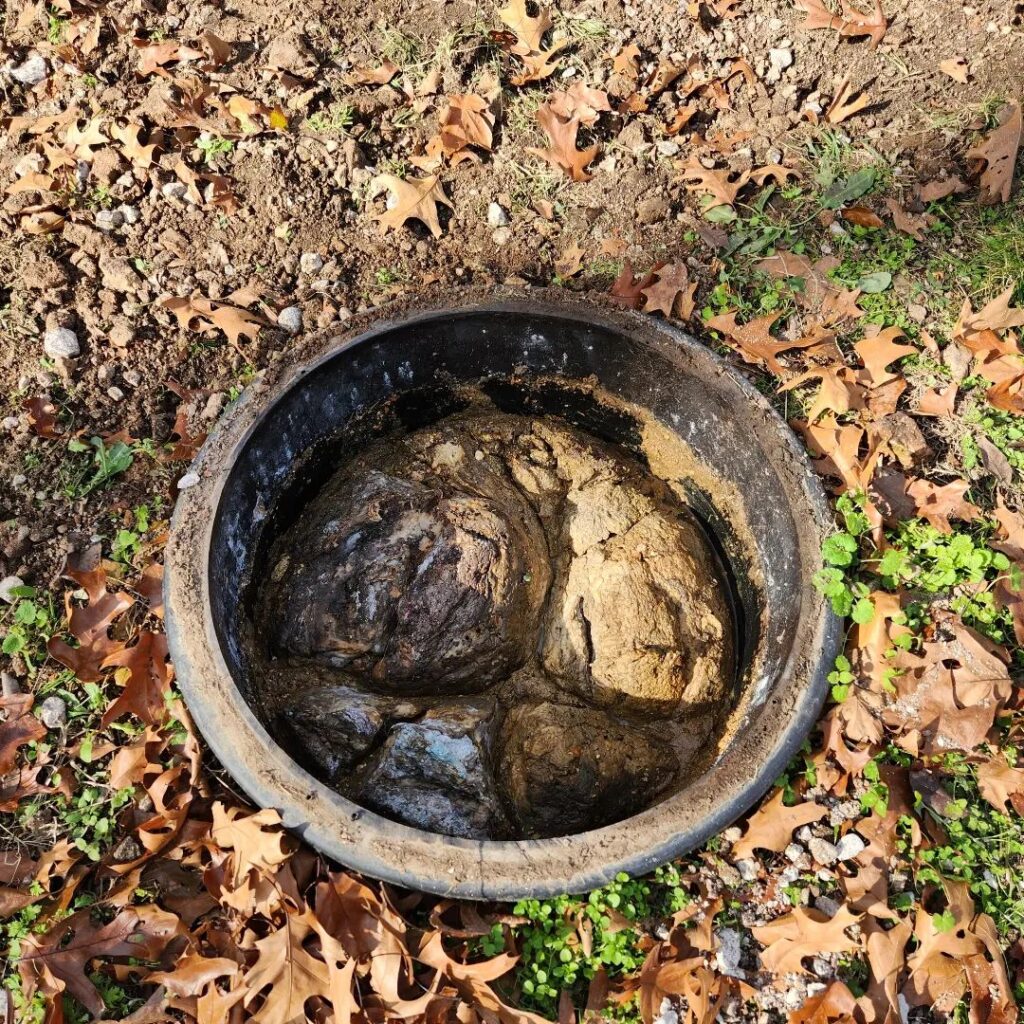Key points
• Cost Range: Pumping a septic tank typically costs between $250 to $500, depending on factors such as tank size and location.
• Additional Fees: Additional services such as repairs, inspections, or locating the tank can increase the total cost.
• Frequency of Service: Regular maintenance, usually every 3-5 years, can prevent costly emergencies and prolong the life of the septic system.
Contents
- 1 Key points
- 2 Septic Tank Pumping Costs
- 3 National Averages for Septic Pumping
- 4 Additional Services and Their Impact on Cost
- 5 Understanding Flat Rates vs. Volume-Based Pricing
- 6 Inspection and Assessment Phase
- 7 The Pumping Procedure
- 8 Post-Pumping Inspection and Recommendations
- 9 Household Size and Water Usage
- 10 Waste Disposal Habits
- 11 Environmental and Climate Considerations
- 12 Repair and Replacement Costs Beyond Pumping
- 13 The Impact of Failing to Pump on Property Value
- 14 Insurance and Warranty Options for Septic Systems
- 15 A Final Word on Septic Financials
- 16 Frequently Asked Questions (FAQ)
Septic Tank Pumping Costs

The nitty-gritty of keeping your septic system ticking is understanding the cost associated with pumping it out. This varies state-to-state due to several factors including local regulations and market conditions. Below you’ll find a handy table breaking down average costs associated with pumping out tanks of various sizes across different states.
| Tank Size | Average Cost Across States (USD) |
|---|---|
| 750 gallons | $150 – $300 |
| 1,000 gallons | $175 – $400 |
| 1,250 gallons | $200 – $500 |
| 1,500 gallons | $225 – $600 |
Keep in mind though when looking at this table that prices vary; they’re just ballpark figures – a starting point if you will. When dealing with something like septic maintenance don’t cut corners; be willing to invest a little more for quality service because in the end, it saves you a bundle. Transitioning between ignoring your system and taking care of it can mean switching from inevitable costly mishaps to manageable routine expenses.
To sum up, stay on top of pumping schedules – it’s better safe than sorry when safeguarding both your wallet and wellbeing when living with a septic system. It’s crucial to remember that although costs can fluctuate wildly depending on where you put down roots, maintaining your home is universal – quite simply non-negotiable.
Septic Tank Pumping Cost by Tank Size and State (Average Costs)
| State | 750 gallons | 1000 gallons | 1250 gallons | 1500 gallons | Average |
|---|---|---|---|---|---|
| Alabama | $175 | $200 | $225 | $250 | $212.5 |
| Alaska | $200 | $225 | $250 | $275 | $237.5 |
| Arizona | $180 | $205 | $230 | $255 | $217.5 |
| Arkansas | $170 | $195 | $220 | $245 | $207.5 |
| California | $225 | $250 | $275 | $300 | $262.5 |
| Colorado | $190 | $215 | $240 | $265 | $227.5 |
| Connecticut | $210 | $235 | $260 | $285 | $247.5 |
| Delaware | $200 | $225 | $250 | $275 | $237.5 |
| Florida | $185 | $210 | $235 | $260 | $222.5 |
| Georgia | $175 | $200 | $225 | $250 | $212.5 |
| Hawaii | $195 | $220 | $245 | $270 | $232.5 |
| Idaho | $180 | $205 | $230 | $255 | $217.5 |
| Illinois | $205 | $230 | $255 | $280 | $242.5 |
| Indiana | $175 | $200 | $225 | $250 | $212.5 |
| Iowa | $190 | $215 | $240 | $265 | $227.5 |
| Kansas | $295 | $320 | $345 | $370 | $332.5 |
| Kentucky | $230 | $255 | $280 | $305 | $267.5 |
| Louisiana | $290 | $315 | $340 | $365 | $327.5 |
| Maine | $330 | $355 | $380 | $405 | $367.5 |
| Maryland | $195 | $220 | $245 | $270 | $232.5 |
| Massachusetts | $285 | $310 | $335 | $360 | $322.5 |
| Michigan | $305 | $330 | $355 | $380 | $342.5 |
| Minnesota | $300 | $325 | $350 | $375 | $337.5 |
| Mississippi | $260 | $285 | $310 | $335 | $297.5 |
| Missouri | $255 | $280 | $305 | $330 | $292.5 |
| Montana | $265 | $290 | $315 | $340 | $302.5 |
| Nebraska | $250 | $275 | $300 | $325 | $287.5 |
| Nevada | $280 | $305 | $330 | $355 | $317.5 |
| New Hampshire | $240 | $265 | $290 | $315 | $277.5 |
| New Jersey | $275 | $300 | $325 | $350 | $312.5 |
| New Mexico | $235 | $260 | $285 | $310 | $272.5 |
| New York | $205 | $230 | $255 | $280 | $242.5 |
| North Carolina | $225 | $250 | $275 | $300 | $262.5 |
| North Dakota | $325 | $350 | $375 | $400 | $362.5 |
| Ohio | $270 | $295 | $320 | $345 | $307.5 |
| Oklahoma | $340 | $365 | $390 | $415 | $377.5 |
| Oregon | $320 | $345 | $370 | $395 | $357.5 |
| Pennsylvania | $335 | $360 | $385 | $410 | $372.5 |
| Rhode Island | $245 | $270 | $295 | $320 | $282.5 |
| South Carolina | $200 | $225 | $250 | $275 | $237.5 |
| South Dakota | $315 | $340 | $365 | $390 | $352.5 |
| Tennessee | $220 | $245 | $270 | $295 | $257.5 |
| Texas | $310 | $335 | $360 | $385 | $347.5 |
| Utah | $215 | $240 | $265 | $290 | $252.5 |
| Vermont | $210 | $235 | $260 | $285 | $247.5 |
| Virginia | $340 | $365 | $390 | $415 | $377.5 |
| Washington | $345 | $370 | $395 | $420 | $382.5 |
| West Virginia | $350 | $375 | $400 | $425 | $387.5 |
| Wisconsin | $355 | $380 | $405 | $430 | $392.5 |
| Wyoming | $360 | $385 | $410 | $435 | $397.5 |
Your actual costs will vary based on local rates and specifics about your setup, but this table gives you a ballpark idea of what to budget for. It’s commonplace for these expenses to trend upward as tanks grow larger – it’s simply more material to handle for our hardworking service pros. Additionally, where you’re planted state-wise plays its part in determining how deeply you’ll dip into your wallet; some locales have pricier labor or disposal fees.
All things considered, handling your septic system upkeep responsibly boils down to being proactive with both maintenance routines and financial planning. By keeping abreast of potential costs and cushioning yourself against unforeseen expenses, managing this aspect of homeownership becomes less daunting—and dare I say it—almost seamless.
Size and Capacity of Septic Tank

When it comes to septic tank maintenance, size definitely matters. It stands to reason: the bigger your tank, the more it’ll cost you to have it emptied. It’s kind of like filling up a larger car’s gas tank—it’ll hit your wallet a bit harder. But don’t forget, installing an adequately sized tank in the first place can save you money down the road by reducing the frequency of pump-outs.
Frequency of Use and Septic System Age

How often you pump out your septic tank isn’t set in stone—it varies depending on how much you’re sending down the pipes. The more use your system gets, the more often you’ll need to pump it out; keep in mind, older systems might need a tad more TLC than their younger counterparts. Just like with people, things tend to run less smoothly as they age.
Geographic Location and Local Regulations
Your local area plays its part too. Some places just charge more for these sorts of services—it’s a fact of life. Also, certain states or counties might have rules that hike up the cost a little or impact how things need to be done, adding another layer to the financial cake.
National Averages for Septic Pumping
Digging into the financials of septic maintenance, it’s clear that regular pumping is a must—both for your pocketbook and the environment. On average, folks across the U.S.
will shell out between $295 to $610 to get their septic tank pumped. However, this price tag isn’t set in stone; several factors can cause it to swing up or down.
Additional Services and Their Impact on Cost
Let’s not forget that sometimes a straightforward pump job blossoms into a full-blown affair with additional services ratcheting up the total cost. Inspections, repairs, or having to locate the tank if it’s not easily accessible – all of these extras will add more digits to your final bill. Moreover, if environmental regulations call for specialized disposal or treatment of the waste, well, that’s another penny to pinch.
Understanding Flat Rates vs. Volume-Based Pricing
When it comes to pricing models for septic pumping, providers tend to follow two main paths: flat rates or volume-based pricing. A flat rate means you’ll pay one price regardless of your tank size—a no muss no fuss approach. Meanwhile, volume-based billing hinges on how much sludge needs hauling out of your tank—the bigger the tank or the fuller it is; naturally, the more money you’ll fork over.
By staying ahead of your septic upkeep and understanding the costs involved from region-to-region and company-to-company; you’re setting yourself up for smooth sailing with no messy surprises around the bend!
Inspection and Assessment Phase
Before the septic tank pumping can begin, a thorough inspection must be conducted. This essential first step involves evaluating the system to determine its current condition and uncover any potential problems. The assessment includes checking for leaks, inspecting the drain field, and ensuring that the baffles are intact. Any anomalies or signs of wear call for immediate attention to avoid future complications.
The Pumping Procedure
The actual septic tank pumping process is much more than just sucking out waste; it’s a meticulous procedure aimed at maintaining the long-term health of your septic system. A service professional will locate the tank, unearth its lid, and then deploy a high-capacity pump attached to a large hose. The equipment whisks away sludge and scum from the septic tank with precision. It’s imperative that all contents are thoroughly removed to prevent any back-up issues down the line.
Post-Pumping Inspection and Recommendations
Once the tank is empty, an inspection follows to ensure no damage occurred during pumping. Afterward, homeowners receive valuable advice on upkeep routines and schedules that could stretch out the time between services. Observations may include lifestyle adjustments such as being mindful of what goes down the drain to stave off unnecessary strain on the system.
Maintaining a septic system doesn’t have to break the bank; however, skimping on routine maintenance could lead to hefty repair bills down the road. While costs do vary from state to state, they follow somewhat of a pattern by tank size—bigger tanks require more resources and thus have higher service charges.
The financial aspect of regular septic maintenance might seem like a bit of a drag initially, but consider this: investing in timely pumping services is akin to keeping your car running smoothly—it saves you money in the long run by avoiding major headaches and expenses caused by neglect.
Taking care of your home’s waste management efficiently keeps those bad situations at bay—because let’s face it, no one enjoys dealing with a messy septic backup situation! So keep on top of your system’s needs; stay proactive rather than reactive when it comes to septics!
Household Size and Water Usage

When assessing the ongoing maintenance of septic systems, one can’t overlook the impact of household size and water consumption on the pumping schedule. Larger families typically use more water, a fact that directly correlates with the frequency of required septic tank pumping. Each additional person in a home increases the volume of wastewater funneling into the septic system. This ramped-up flow means that sludge and scum layers within the tank amass quicker than they would in homes with fewer residents, thereby necessitating more frequent maintenance.
Waste Disposal Habits
The axiom “out of sight, out of mind” doesn’t quite apply when it comes to waste disposal habits and their effect on septic system health.
Our flushing practices play a vital role; non-biodegradable products or harsh chemicals can wreak havoc on the delicate balance within a septic system.
Cumbersome materials like wet wipes, feminine hygiene products, or even excessive use of garbage disposals add unnecessary strain to the system. Consistent dumping of such items necessitates a stepped-up pumping timetable to prevent backups or damage.
Environmental and Climate Considerations
Let’s delve into how environmental factors and climate conditions bear upon a septic system’s upkeep routine. Regions graced with elevated rainfall levels might find their septic systems being overwhelmed due to increased groundwater levels – leading potentially to more rapid tank filling.
Conversely, arid areas aren’t off the hook; extreme dryness can affect soil absorption capacity. Consequently, geographical location and its accompanying weather patterns are pivotal variables when penciling in your next septic service appointment.
Repair and Replacement Costs Beyond Pumping
Natural wear and tear dictates that at times, a septic system will extend beyond mere maintenance into the territory of repairs or outright replacement. Whether due to aging, misuse, or unexpected malfunctions, these costs can certainly give homeowners a run for their money.
Replacing a broken pump may set you back a pretty penny—often between $800 to $1,500. Tackling damaged pipes could cost around $50 to $250 per foot. Worst case scenario: if your entire septic system says sayonara, you’ll be looking at expenses potentially exceeding $3,000 and, in some dramatic cases, reaching a jaw-dropping five-figure sum.
The Impact of Failing to Pump on Property Value
Hang tight because it’s not just your pocketbook at stake. Your castle’s value is intertwined with the kingdom of the underground—your septic system. Neglect it, and you might as well flush your hard-earned equity down the drain.
When the time comes to sell, eager buyers could turn tail if they sniff out any septic issues. Regular pumping isn’t just about keeping odors at bay; it’s vital in maintaining the sanctuary that secures your property’s worth.
Insurance and Warranty Options for Septic Systems
Covering all bases includes investigating insurance or warranty options for your below-ground buddy. Some homeowner policies are as choosy as a cat with its food—they just won’t cover septic systems without additional riders or warranties. Delving into this beforehand prevents heartache when unforeseen repairs rear their ugly head. Be proactive—a little research now might save loads later.
A Final Word on Septic Financials
All things considered, handling your septic system upkeep responsibly boils down to being proactive with both maintenance routines and financial planning. By keeping abreast of potential costs and cushioning yourself against unforeseen expenses, managing this aspect of homeownership becomes less daunting—and dare I say it—almost seamless.
Frequently Asked Questions (FAQ)
What factors influence the expense of septic tank maintenance?
The cost of maintaining a septic tank system varies based on several factors, including the tank size, soil properties such as clay content or alumna levels, the drainage system’s complexity, and any additional services like sewer line inspections or methane gas checks. Maintenance expenses could also fluctuate with local jurisdiction regulations.
Can using certain products at home lead to septic system problems?
Absolutely, homeowners should be cautious with what goes down their drains. Items like coffee grounds, latex products, and heavy chemicals can disrupt the delicate balance in the septic system causing clogs or impairing the natural breakdown process, potentially leading to costly repairs or maintenance.
What's an early warning sign that it's time for septic tank pumping?
When you notice slow drains across your property, unpleasant odors resembling methane gas, or hear gurgling sounds from your toilet or pipes – it’s probably time to call in a professional. These are telltale signs that your septic tank might be reaching its capacity.
How do people determine the optimum size tank for their home's wastewater needs?
Homeowners need to assess their water usage patterns and compare them against their family size and home’s square footage. An ADT specialist or septic system expert can offer tailored advice by calculating estimated water flow and determining the right septic tank size accordingly.
What is the importance of regular camera inspections of a septic system?
Camera inspections play a crucial part in detecting underground problems in your sewage lines which aren’t immediately noticeable. This tech-savvy step allows experts to pinpoint issues like blockages or damage without excavation, often saving homeowners from more serious trouble down the line.
Are there eco-friendly practices to enhance my property's drainage system?
Certainly! Planting vegetation with deep root systems can help manage surplus water naturally. Additionally, using environmentally safe cleaning products minimizes harsh chemicals entering your system. Both these efforts not only protect groundwater but also extend your leach field and drain field life.
Can high-tech security systems like ADT impact septic system accessibility?
Modern security installations typically don’t interfere with septic accessibility. However, if an alarm product requires underground wiring or installation near your septic location, coordinating with HOME SECURITY experts ensures both systems coexist without issue.
How do accessibility impairments affect emergency plumbing situations for those with disabilities?
For individuals with impairments, enhanced accessibility features like keyboard navigation integrated into plumbing service websites (as seen in Accessibility menus) allow quick contact in emergencies. Additionally, companies that comply with SAFER standards cater specifically to those needs, providing peace of mind during urgent plumbing issues.
Is it worth purchasing add-ons like ejector pumps or sewer line treatments along with standard pumping services?
Add-ons such as ejector pumps may be useful if your basement frequently encounters waste water backup due to elevation issues. Sewer line treatments often assist in maintaining optimal function and prevent build-up leading to blockages. While they’re an extra expense upfront, they can mitigate potential costs from future problems.

I’m Tim Robberts, a seasoned wastewater treatment & septic system expert with over 40 years of experience in the field. My career began as a septic tank installer, and I quickly gained a reputation for my attention to detail and commitment to excellence. Over the years, I’ve honed my skills in designing, installing, and maintaining septic systems for residential and commercial properties.